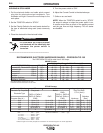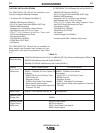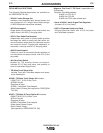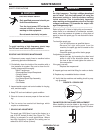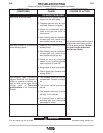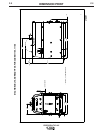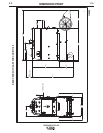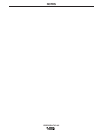
E-5
TROUBLESHOOTING
E-5
PRECISION TIG 185
Observe all Safety Guidelines detailed throughout this manual
If for any reason you do not understand the test procedures or are unable to perform the tests/repairs safely, contact your
CAUTION
PROBLEMS
(SYMPTOMS)
POSSIBLE
CAUSE
RECOMMENDED
COURSE OF ACTION
Black areas along weld bead.
Weak high frequency - machine has
normal welding output.
High frequency “spark” is present at
tungsten electrode, but operator is
unable to establish a welding arc.
Machine has normal open circuit
voltage (refer to Technical
Specifications in the Installation
Chapter).
1. Clean any oily or organic contam-
ination from the work piece.
2. Tungsten electrode may be cont-
aminated. Replace or sharpen.
3. Check for contaminated gas or
leaks in the gas line, torch, or
connections.
4. Gas shielding may be insufficient.
Increase gas flow; reduce tung-
sten stickout beyond gas cup.
1. Check for poor connections in the
welding circuit.
2. Gas shielding may be insufficient.
Increase gas flow; reduce tung-
sten stickout beyond gas cup.
3. Check for work and electrode
cables in poor condition allowing
high frequency to “Leak Off”.
4. Keep cables as short as possible.
5. Check Spark Gap operation and
setting (0.020”).
1. The tungsten electrode may be
contaminated. Replace or sharp-
en.
2. The current control may be set
too low.
3. The tungsten electrode may be
too large for the process.
4. If a helium blend is used as a
shielding gas, then reduce the
percentage of helium.
If all recommended possible areas of
misadjustment have been checked
and the problem persists, Contact
your local Lincoln Authorized
Field Service Facility.
TIG MODE PROBLEMS



